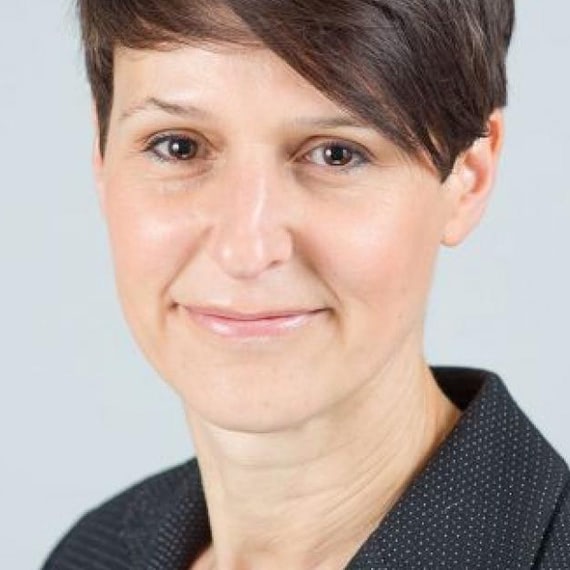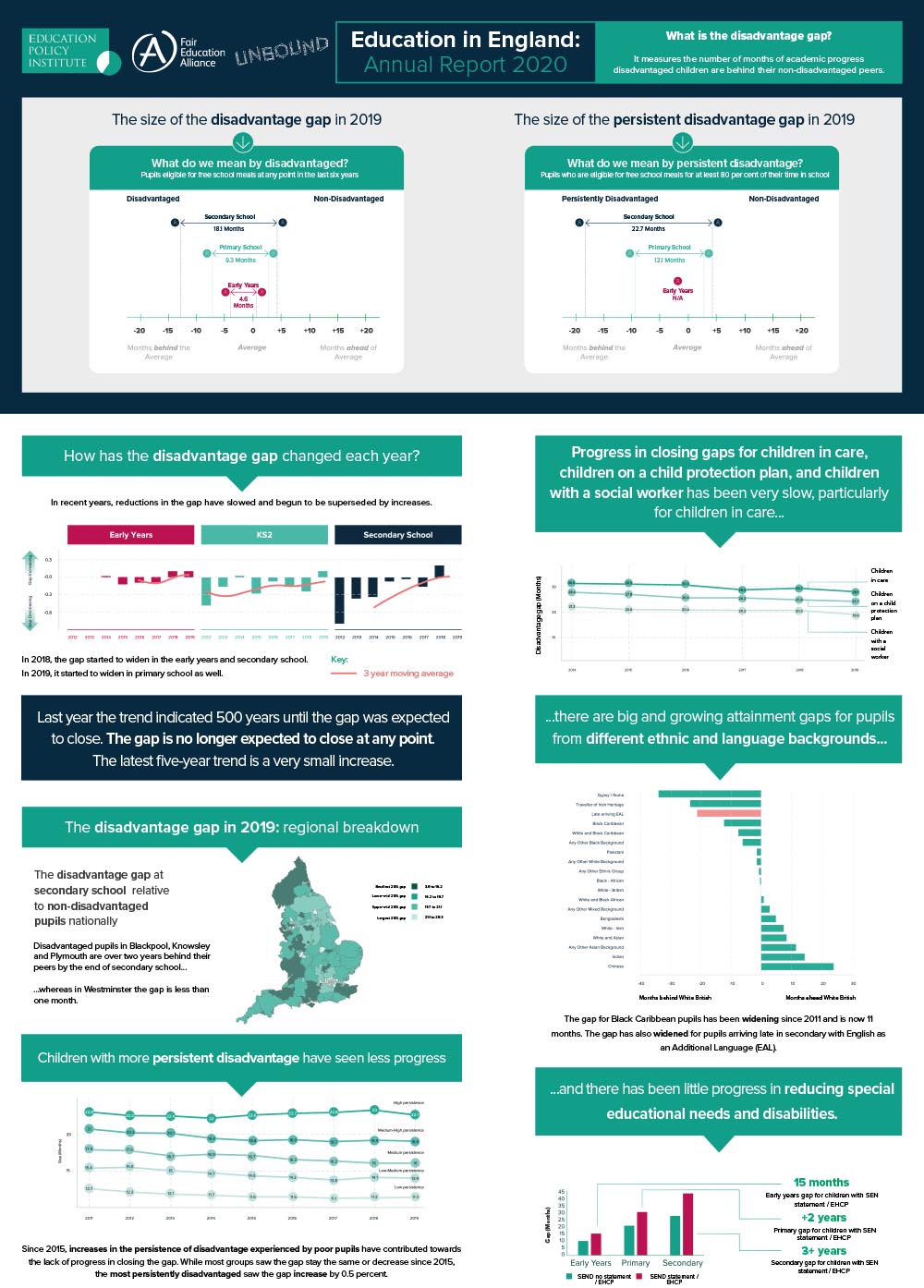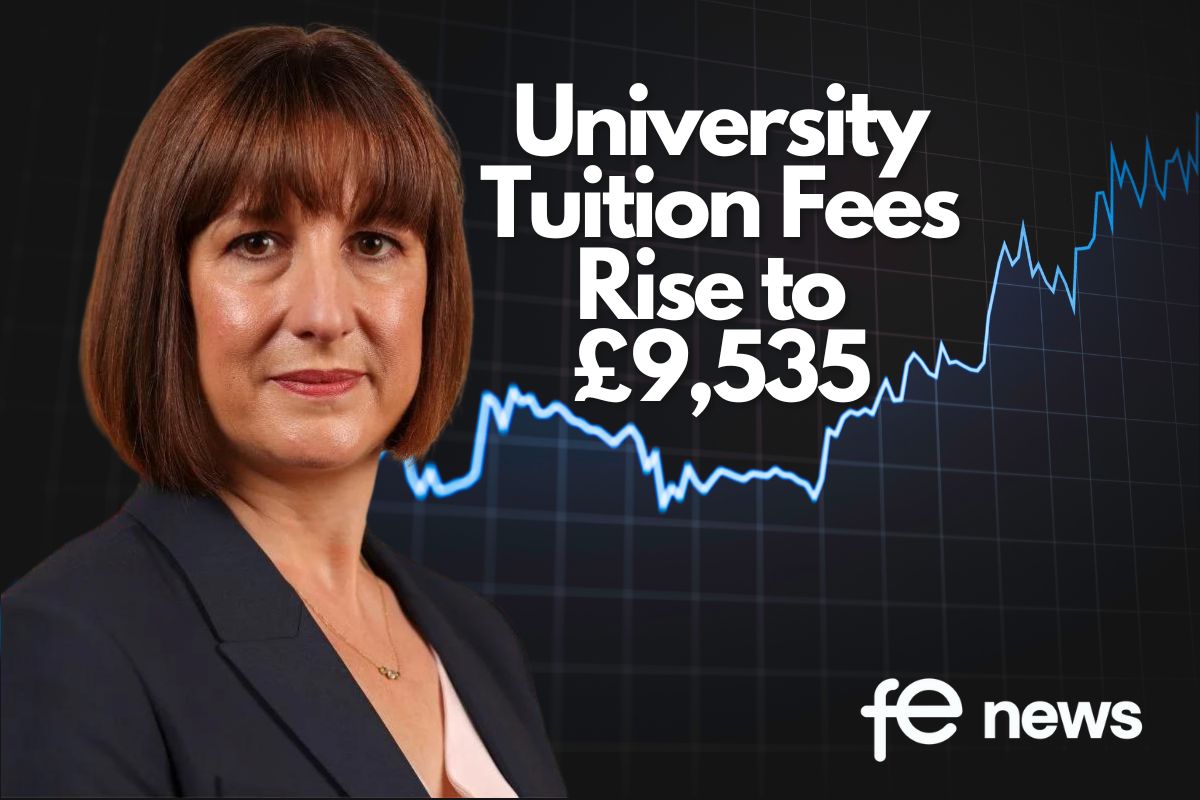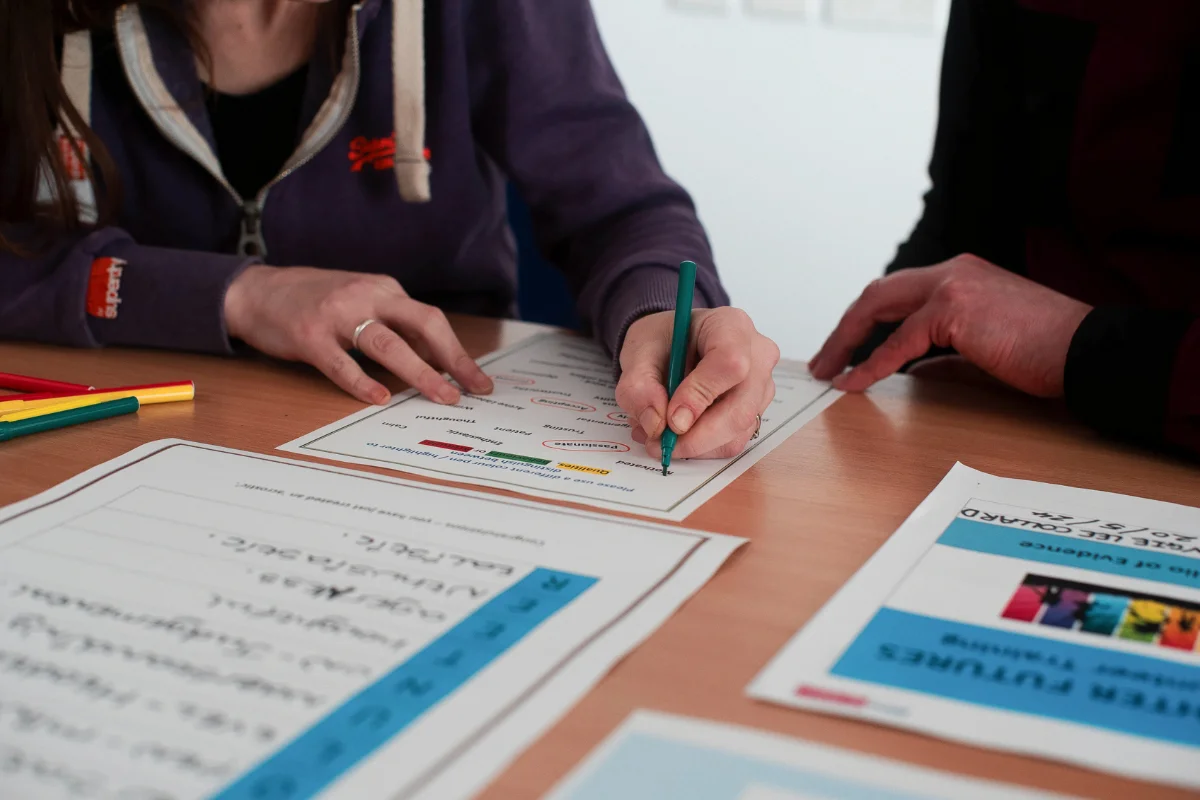The education disadvantage gap had stopped closing even before the pandemic, posing a major setback for the government’s “levelling up” ambitions

New research published today (Wednesday 26th August) by the @EduPolicyInst (EPI) shows that the attainment gap between poorer pupils and their more affluent peers has stopped closing for the first time in a decade.
The analysis highlights that policymakers have not succeeded in responding to earlier reports warning of a major loss of momentum in closing the gap.
Researchers have found that disadvantaged pupils in England are 18.1 months of learning behind their peers by the time they finish their GCSEs – the same gap as five years ago.
The new findings also show that the gap at primary school increased for the first time since 2007 – which may signal that the gap is set to widen in the future.
The education disadvantage gap is a leading indicator of how the government is performing on social mobility. The research findings, which are based on Department for Education data, are likely to alarm policymakers, given the stalling of the gap occurred even before the COVID-19 pandemic had hit the education system.
These adverse trends are becoming further entrenched with each year that passes and combined with the disproportionate impact of prolonged school closures on poorer pupils, are likely to significantly undermine the Prime Minister’s “levelling up” agenda.
Researchers have identified the increasing proportion of disadvantaged children in persistent poverty as a contributory cause of the lack of progress with narrowing the disadvantage gap.
Education in England: Annual Report 2020, which is published in partnership with the Fair Education Alliance (FEA) and Unbound Philanthropy, also examines the disadvantage gap at both a local authority and parliamentary constituency level, across different school subjects, and among different groups of pupils.
Sector Response
 Kevin Courtney, Joint General Secretary of the National Education Union, said:
Kevin Courtney, Joint General Secretary of the National Education Union, said:
“No child should be limited by their background or postcode, yet after years of austerity and cuts to local services the gap between disadvantaged children and their peers is no longer closing – in fact, it is starting to grow. Cuts to school funding, a growing teacher recruitment and retention crisis and ever-increasing class sizes have a significant impact on a pupil’s experience in school. In addition, children from disadvantaged backgrounds have their own barriers to overcome.
“Despite the Government’s promise to ‘level up’ education, children who need the most support have been badly let down. Even before the coronavirus pandemic, head teachers, teachers and support staff had been working flat out to tackle the impact of poverty in the classroom, but inadequate government policies and cuts to school funding have raised almost insurmountable barriers to learning for children from disadvantaged backgrounds. Every day our members teach children who come to school too hungry to learn or are left without the basic school equipment they need. At the start of 2020 a third of children in the UK – 4.2 million children – were trapped in poverty. Research indicates that as the effects of lockdown and recession take hold, a further 200,000 children will be in poverty by Christmas. In the fifth richest country in the world, this is simply shameful.
“Over the course of the pandemic school staff worked hard to reach out to families they knew were being hit the hardest, but schools alone cannot solve the issue of poverty. Immediate, systemic action is needed to ensure that no child is left behind. But the Government has been falling badly short, with the botched rolling out of free laptops and other equipment to those who need them, and a distribution system for free school meals in lockdown so bungled that it fell to schools and local authorities to plug the gap.
“If the Government is serious about ensuring all pupils receive access to a good quality, equitable education they must put their money where their mouth is and put measures in place to lift pupils out of the grip of poverty and disadvantage.
“When the new term starts next week, many children will return to school having faced significant upheaval and new economic challenges at home. There is an opportunity for us to build back better in the light of the recent crisis. This is the Government’s chance to right the wrong of society-wide inequality and its impact on educational achievement. They must grasp it.”
 Russell Hobby, CEO of Teach First, said:
Russell Hobby, CEO of Teach First, said:
“It’s devastating to see that progress in closing the attainment gap over the last decade is stuck – especially as the effects of Covid-19 are set to see it grow even further. This growing inequality is robbing young people of their futures.
“We need to act urgently and stand behind the teachers and schools tirelessly fighting this injustice. This means prioritising investment in schools serving low-income areas – where they face bigger challenges on a daily basis. Only then will we be able to build a fairer, thriving future for every child, not just some.”
Cllr Judith Blake, Chair of the Local Government Association’s Children and Young People Board, said:
“Good quality early education can make an enormous difference to children’s lives, with around 40 per cent of the attainment gap between disadvantaged pupils and their peers emerging by age 5.
“Councils have long raised the issue that funding for early entitlements is not enough, impacting on the quality of provision and the availability of good support for children with special educational needs and disabilities.
“Maintained nursery schools support many of the most disadvantaged children and achieve outstanding results. However, the additional funding they receive to deliver this level of education is only guaranteed until the end of this academic year.
“The Government needs to use the forthcoming Spending Review to properly resource all early years settings to ensure that we can make a significant difference to the attainment gap.”
 Professor Becky Francis, CEO of the Education Endowment Foundation (EEF), said:
Professor Becky Francis, CEO of the Education Endowment Foundation (EEF), said:
“Today’s EPI report again shows that the attainment gap between disadvantaged pupils and their more affluent peers continues to blight our education system. As our research shows, this gap is likely to have widened considerably as a result of school closures.
It is more important than ever that teachers are empowered to make use of evidence-informed approaches and that schools are supported at every level to meet the needs of socio-economically deprived students.”
In May, the EEF published an evidence review assessing the impact of school closures on the attainment gap. It found that school closures are likely to reverse progress made to close the gap in the last decade since 2011. The National Tutoring Programme will make high-quality tutoring available to schools to help disadvantaged pupils whose education has been affected by school closures. It aims to support schools in providing a sustained response to the coronavirus pandemic and to provide a longer-term contribution to closing the attainment gap.
 Kate Green MP, Labour’s Shadow Education Secretary, said:
Kate Green MP, Labour’s Shadow Education Secretary, said:
“Even before the coronavirus pandemic began, the Conservatives were failing to give every young person the best start in life.
“Progress in reducing inequality had ground to a halt, and the government have failed to support the most disadvantaged children while their schools were closed.
“The repeated failures to close the attainment gap is a sign of the stark incompetence of a government that has spent the summer creating chaos with the exams fiasco instead of focusing on getting schools open.
“It is time for them to get a grip, and ensure that every young person return to education in September.”
 David Laws, Executive Chairman of the Education Policy Institute (EPI), said:
David Laws, Executive Chairman of the Education Policy Institute (EPI), said:
“This report highlights that in spite of the government’s aspiration to “level up” opportunity, the education gap between poor children and the rest is no longer closing, for the first time in around a decade. Before the COVID crisis, disadvantaged children were around 1.5 years of learning behind other pupils, and this figure seems almost certain to have increased since the closure of schools.
“It is deeply concerning that our country entered the pandemic with such a lack of progress in this key area of social policy, and the government urgently needs to put in place new policy measures to help poor children to start to close the gap again.”
Sue Flohr, Head of Policy at the British Dyslexia Association, said:
“The Education Policy Institute’s Annual Report on Education in England has highlighted a growing imbalance in our education system. It demonstrates that since changes were introduced in 2015, students with specific learning differences have been falling through the cracks and having to fend for themselves rather than gaining vital support.
“We welcome today’s report from the Education Policy Institute for shining a light on the harsh reality that our education system is currently facing. The impact of school closures due to Covid-19 has been particularly challenging for those with specific learning differences like dyslexia and dyscalculia. Parents have been left to manage their child’s education without the additional support they need, meaning that these children may be facing an even larger education gap. We would like to encourage the Education Policy Institute to examine the impact on students with specific learning difficulties in greater detail, and what plans need to be in place to support them as they return to school.”
The British Dyslexia Association regularly receives feedback from parents that the current school system is not fit to support their child’s education. In a recent study by the British Dyslexia Association for the All-Party Parliamentary Group for Dyslexia and other SpLDs, one parent commented that:
“I feel I’ve failed my child by placing him in an education system that doesn’t cater for him.”
Jo Hutchinson, report author and Director of Social Mobility and Vulnerable Learners at the Education Policy Institute (EPI), said:
“Our research shows that over the last two years an increasing number of children are living in long term poverty, and since these children are furthest behind in their learning, that is contributing to adverse trends in the national disadvantage gap.”
“Our new data uncovers the deep educational impact of family trauma on children with a social worker. Those with a Child Protection Plan, who will have experienced abuse or neglect, face a GCSE gap of more than two years. This group has grown in size and has no direct funding or support in school, and the root causes of their vulnerability have increased since the lockdown.
“There is now abundant evidence that poverty and social vulnerability require urgent action both in and outside of school.”
Sam Butters and Gina Cicerone, Co-CEOS of Fair Education Alliance and partners on the report, said:
“This sobering research unveils that the gap between disadvantaged pupils and their wealthier peers has stalled and could be beginning to widen. The message is clear: without systemic change, this gap will never close. Before Covid-19, persistently disadvantaged children were already 22 months behind their more advantaged peers, and it is widely expected this will increase as a result of school closures.
“The research highlights the urgent need for cross-sector approaches that tackle the root causes of inequality. Our coalition of nearly 200 member organisations know that long-term change will only come from collective action involving teachers, government, parents, charities, businesses, and young people. We must work together to make fundamental changes in the education system rather than incremental attempts to make an unfair system a little bit less unfair.”
The education disadvantage gap: the latest trends
The disadvantage gap in England has stopped closing, and there are now several strong indications that it has started to widen:
- At secondary school, by the time they take their GCSEs, disadvantaged pupils (those who have been eligible for free school meals at any point in the last six years) are over 18.1 months of learning behind their peers. This gap is the same as it was five years ago.
- At primary school, the gap between poorer pupils and their peers is 9.3 months, having increased for the first time since at least 2007. This could be a turning point, in which the disadvantage gap now continues to widen at this phase.
- In the early years (pupils in Reception year), the gap has stagnated at 4.6 months, having largely stayed the same since 2013.
- When will the gap close? Last year EPI modelled that it would take over 500 years to eliminate the disadvantage gap at GCSE, based on the rate of progress. This year’s data suggests an even more extreme conclusion: the gap is no longer closing at all.
How do different levels of poverty affect the disadvantage gap?
This year for the very first time, EPI researchers have analysed the gap for pupils across different levels of disadvantage:
- Children with a high persistence of poverty (those on free school meals for over 80% of their time at school) have a learning gap of 22.7 months ‒ twice that of children with a low persistence of poverty (those on free schools meals for less than 20% of their time at school), who have a learning gap 11.3 months.
- Progress in closing the gap has been slowest for pupils with a high persistence of poverty, with the gap remaining much the same after almost a decade. Disadvantaged pupils with lower persistence of poverty have also experienced worsening gaps, although to a lesser degree.
- Significantly, the proportion of pupils with a high persistence of poverty is on the rise. Since 2017, the proportion of pupils in this group has risen from 34.8% to 36.7%. This recent increase appears to be an important contributor to the lack of progress with the gap overall.
How does the disadvantage gap vary in different areas in England?
Across the country, there is wide variation in the disadvantage gap:
- Large disadvantage gaps remain well-established in several regions in England but are particularly acute in the North, West Midlands and parts of the South.
- In some areas, poorer pupils are over two full years of education behind their peers by the time they take their GCSEs, including in Blackpool (26.3 months), Knowsley (24.7 months) and Plymouth (24.5 months).
- In contrast, there are very low GCSE disadvantage gaps concentrated in London, including in Ealing (4.6 months), Redbridge (2.7 months) and Westminster (0.5 months).
This year, for the first time, EPI researchers have also calculated the disadvantage gap at a local level after having controlled for high persistence of poverty in each area.
This reveals that differences in local demographics are essential to understanding why gaps are different in different parts of the country. Under this adjusted measure, many areas that currently rank as some of the worst in the country substantially improve their position once high persistent poverty levels are considered:
- Out of 150 local authorities in England, Knowsley is ranked as having the second-worst education disadvantage gap in the whole country. However, it improves its ranking by 28 places after having adjusted for persistent poverty levels.
- Other areas also see big changes in their rankings under this poverty-adjusted measure: Sunderland moves from having the 12th largest gap to 55th, Liverpool from 23rd largest to 83rd, Hartlepool from 25th largest to 65th.
- Each of these areas have large disadvantage gaps, but a major reason for this may be the large proportion of poor children who are in persistent poverty.
Equally, the poverty-adjusted measure also highlights areas which should be performing better, given their favourable local demographics:
- Surrey makes the biggest fall down the rankings after having adjusted for poverty levels, by 30 places (84th to 54th worst gap).
- Other local authorities who lose out significantly in the rankings after applying this measure include Wiltshire (53rd to 26th worst gap), Leicestershire (71st to 43rd worst gap) and Buckinghamshire (104th to 78th worst gap).
Areas with the largest education disadvantage gaps, adjusting for persistent poverty:
- Controlling for persistent poverty levels, out of 150 local authorities, areas with the largest gaps in the country are now South Gloucestershire (worst disadvantage gap), West Berkshire (second worst gap) and Blackpool (third worst gap).
(A full breakdown of all local disadvantage gaps, including by parliamentary constituency and other levels, can be found here).
How does educational attainment vary by pupil ethnicity?
Attainment varies significantly among pupil ethnic groups:
- Gypsy/Roma pupils are almost three years (34 months) behind White British pupils at GCSE level. In contrast, Chinese pupils are two whole years (23.9 months) ahead of White British pupils in learning at this stage of their education.
- Some ethnic groups have experienced growing inequalities over recent years. Black Caribbean pupils were 6.5 months behind White British pupils in 2011, but this gap has now regressed to 10.9 months, meaning that the gap has widened for Black Caribbean pupils by well over four months in the last eight years.
- Gaps have also widened for pupils from other black backgrounds, and for pupils with English as an additional language who arrived late to the school system.
- EPI researchers plan to carry out further work to better understand the factors behind these significant ethnicity gaps and the changes in the gaps over time. While it is likely that poverty is contributing to some of these trends, there is also a need to understand the extent to which other societal and educational factors are creating and worsening inequalities amongst these groups of pupils.
How does the disadvantage gap vary among more vulnerable pupil groups?
For the very first time, EPI researchers have measured the trend in the disadvantage gap for children in the care system (known as ‘looked after children’) and children who are receiving support from children’s services (known as ‘children in need’). These pupils are significantly educationally disadvantaged:
- Looked after children (LAC) are nearly two and a half years (29.0 months) behind their peers by the time they finish their GCSEs. Progress in closing this gap is slow; it has reduced by only 1 month (3.3%) over the last six years.
- Children in need (CIN) are 20 months behind their peers, while children in need with a Child Protection Plan (typically those who have experienced neglect, or physical, sexual or emotional abuse) are over two years (26 months) behind their peers.
- It is notable that around a quarter of children with a Child Protection Plan do not receive either the Pupil Premium or Looked After Premium from the government. The large gaps among these groups support recent EPI proposals to extend the Looked After Premium to children with Child Protection plans.
Progress in reducing gaps for pupils with Special Educational Needs and Disabilities (SEND) has begun to slow since 2015, particularly for pupils with greater needs:
- Pupils with SEND who have an Education, Health and Care Plan (typically those with greater needs) are well over three years (41.1 months) behind their peers at the end of secondary school, while those with SEND without an EHCP are a full year (24.4 months) behind their peers.
‘The disadvantage gap’ measures the number of months of academic progress disadvantaged children are behind their non-disadvantaged peers. The disadvantage gap is examined at three education phases: early years (reception year), primary school (Key stage 2) and secondary school (Key stage 4, GCSEs). Our methodology for calculating the gap is set out in the full report.
Our leading measure of the disadvantage gap at secondary school level measures attainment in GCSE English language and maths. All findings at secondary school level above relate to this measure. Examining the disadvantage gap in these two compulsory GCSE subjects gives us a more reliable assessment of the trend of the gap and a more robust basis for estimating how long it is likely to take to close, compared to the GCSE gap across all subjects. This is because English language and maths have been less affected by recent government reforms, which have affected student subject choices.
‘Disadvantaged pupils’ are defined as those pupils known to be eligible for free school meals at any point in the previous six years.
Pupils with a ‘high persistence’ of disadvantage or poverty are those pupils who have been eligible for free school meals at least 80% of their time in school. In this year’s Annual Report, we examine how the gap is represented among poorer pupils with varying levels disadvantage, ranging from ‘high’ to ‘low’. You can read more about this on p.16 of the full report.












Responses